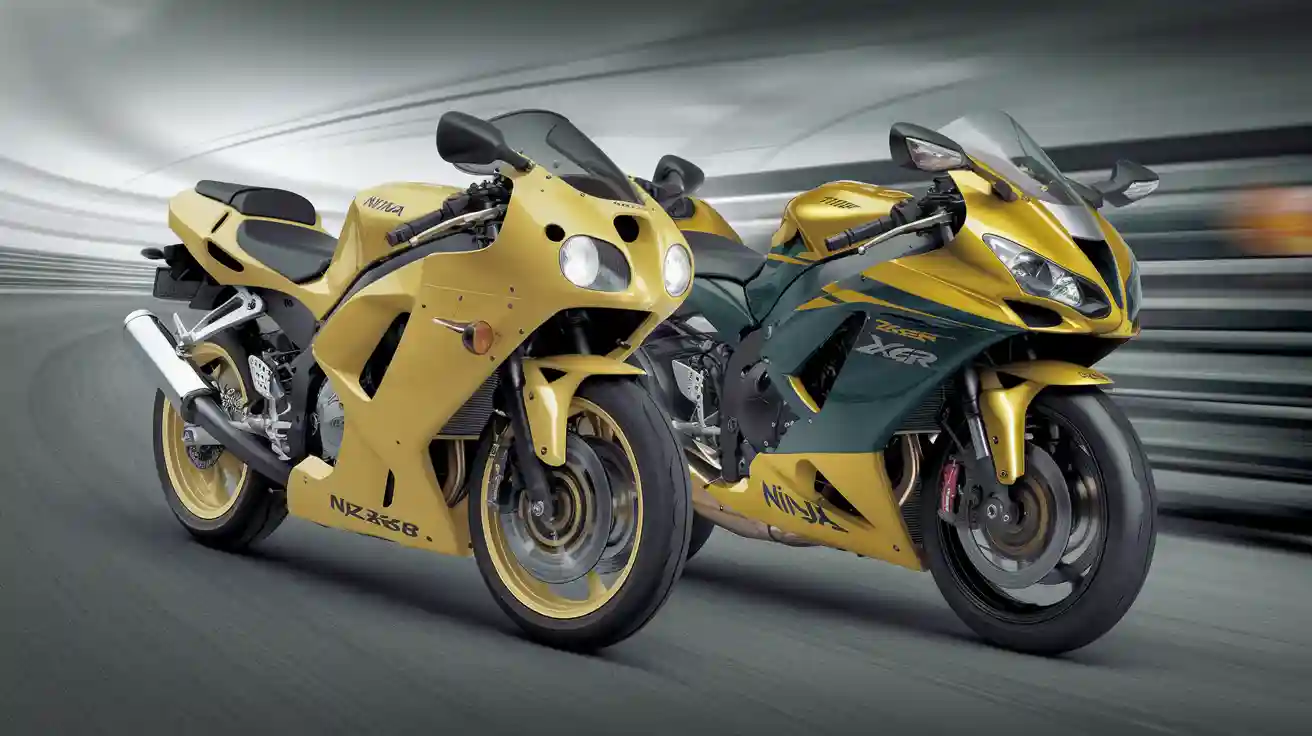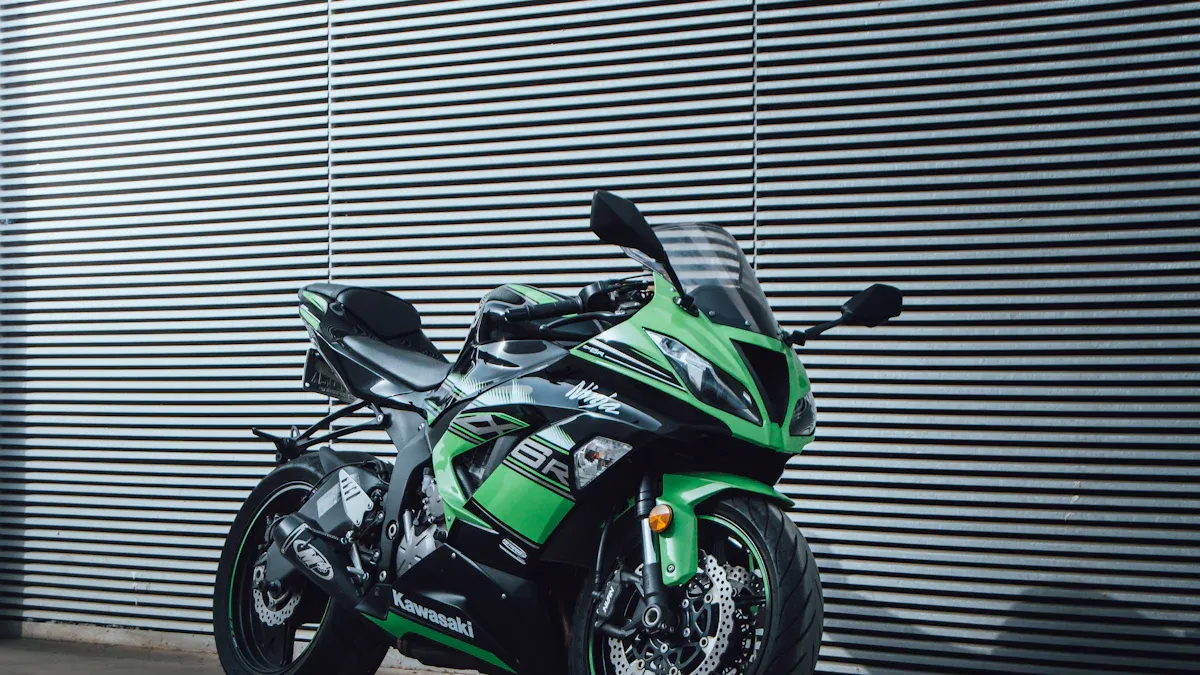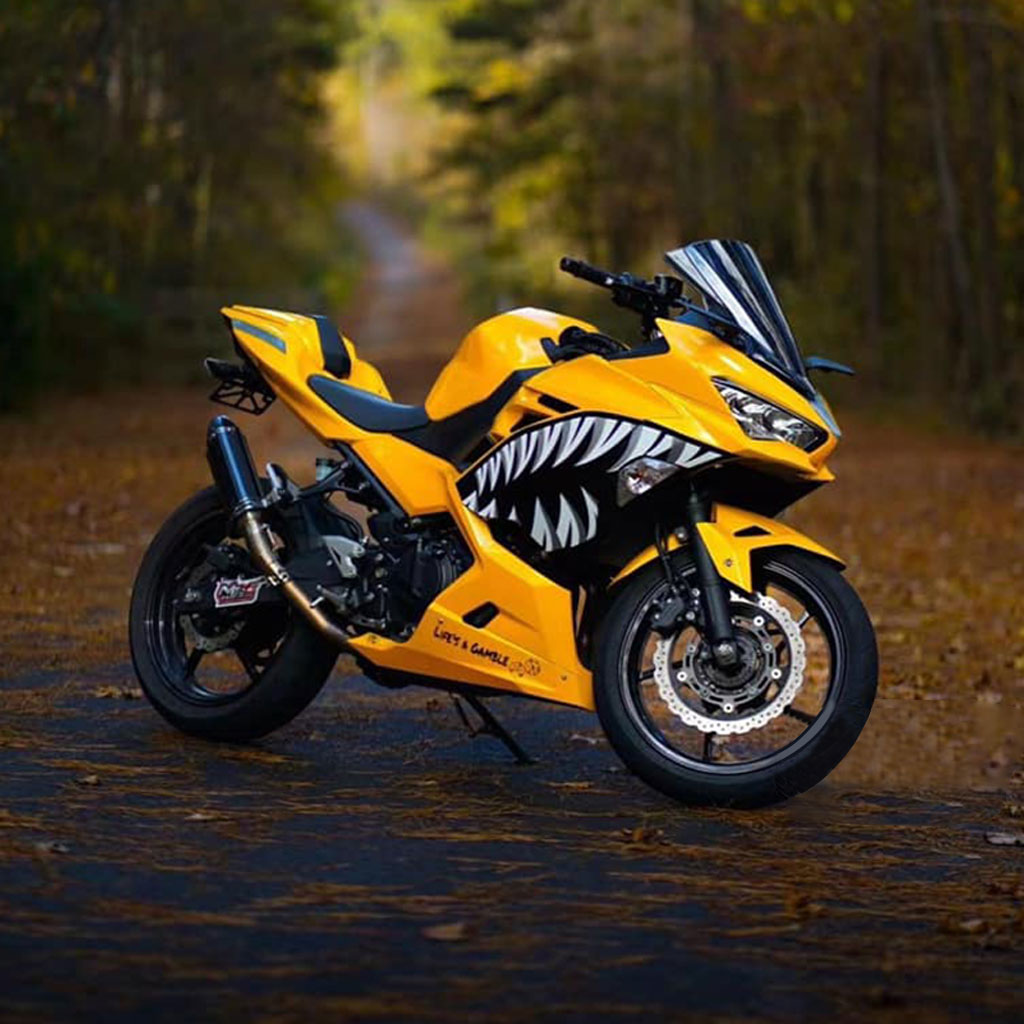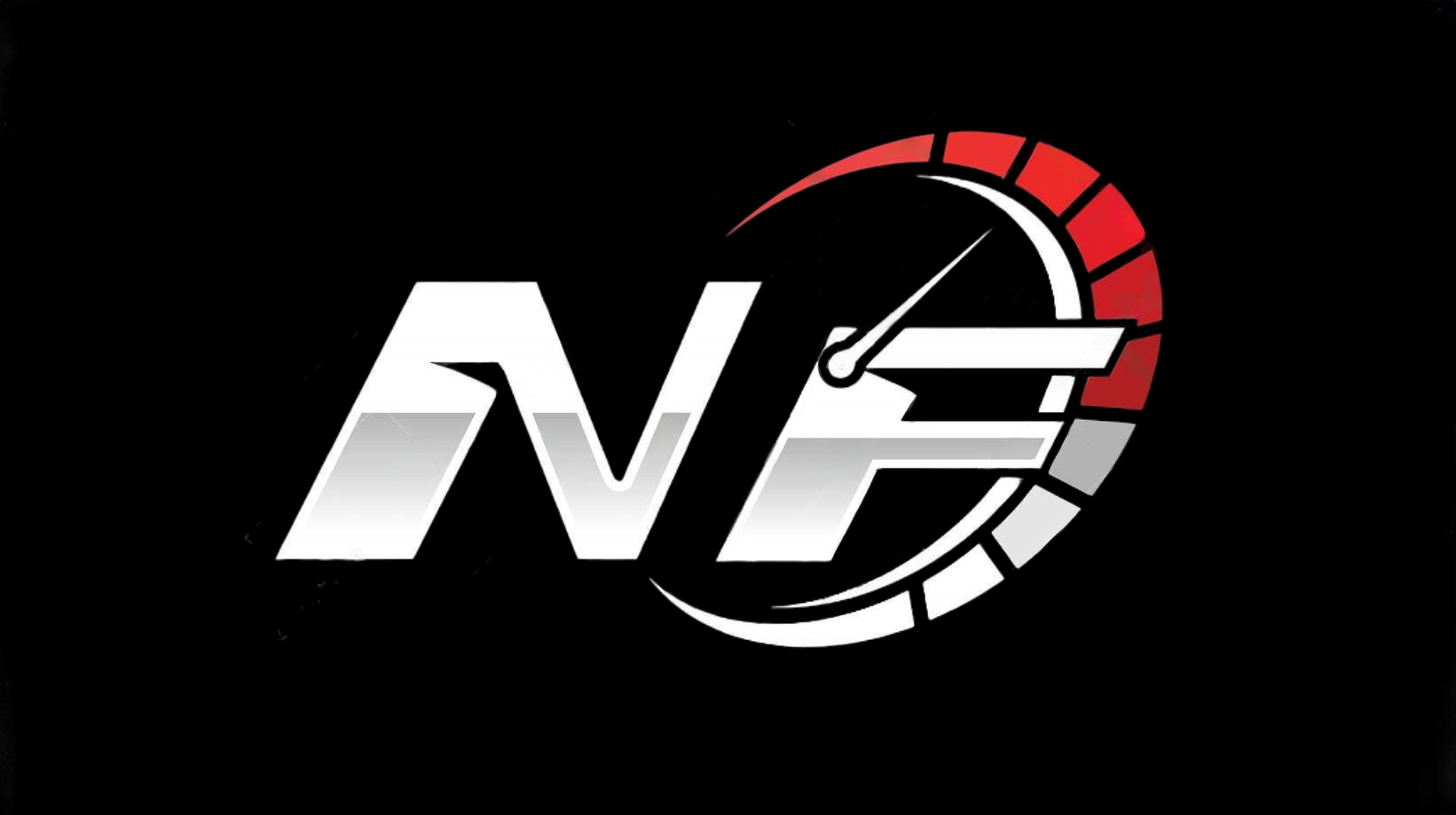Comparing the Muscle of 2005 Ninja ZX6R 636 and Its Successor

Riders who crave strong acceleration often choose the 2005 ninja zx6r 636 for its impressive muscle. Kawasaki gave this model a 636 cc engine that delivers 130 ps (96 kW) at 14,000 rpm and 70.6 Nm of torque at 11,500 rpm. These numbers stand out against later models.
| Model Year | Engine Displacement | Horsepower (ps/kW) | Torque (N·m) |
|---|---|---|---|
| 2005 | 636 cc | 130 ps (96 kW) | 70.6 |
Many riders notice the difference in power when they ride both bikes.
2005 Ninja ZX6R 636 vs 2007 ZX6R: Engine and Power
Horsepower and Torque Comparison
The 2005 ninja zx6r 636 stands out because of its larger engine and advanced features. Kawasaki gave this model a 636 cc engine, while the 2007 ZX6R uses a smaller 599 cc engine. The 2005 version also has a higher compression ratio and a more advanced fuel delivery system. These differences help the 2005 model produce more power and torque.
| Specification | 2005 Ninja ZX-6R 636 | 2007 Ninja ZX-6R 599 |
|---|---|---|
| Displacement | 636 cc | 599 cc |
| Compression Ratio | 12.9:1 | Generally lower |
| Fuel Delivery | Dual fuel injection with oval-shaped sub-throttles on 38mm Keihin throttle bodies | Standard EFI, no dual injection or oval sub-throttles mentioned |
| Engine Improvements | Larger valves, new cam profiles, new pistons with reshaped crowns and low-friction skirts | Reverted to smaller 599 cc engine, fewer advanced engine features |
| Performance Notes | Higher torque and power (70.5 Nm @ 11500 rpm, 130 hp @ 14000 rpm) | Lower torque and power, less favored due to smaller displacement |
The 2005 ninja zx6r 636 delivers 130 horsepower at 14,000 rpm and 70.6 Nm of torque at 11,500 rpm. The 2007 ZX6R cannot match these numbers because of its smaller engine and fewer advanced features.
Real-World Power Delivery
On the road, riders feel the difference between these two models. The 2005 ninja zx6r 636 gives strong power across a wide range of engine speeds. Its torque curve stays high through most of the rev range, so riders get quick acceleration even at lower speeds. The 2007 ZX6R, with its smaller engine, needs higher rpm to reach its peak power. This means riders must rev the engine harder to get the same feeling of speed.
- The 636 engine produces a broader and stronger midrange torque curve.
- The 2007 ZX6R revs higher and can reach a higher peak horsepower at very high rpm.
- The 636’s torque curve feels more powerful in normal riding conditions.
- Dyno charts show the 636 above the 600cc models in torque.
- The 2007 ZX6R has a narrower powerband and less low-end torque.
Riders who want strong acceleration in everyday riding often prefer the 636 because it feels more responsive at lower and middle speeds.
Engine Character and Riding Feel
The engine character shapes how each bike feels on the road. The 2005 ninja zx6r 636 gives a lively and muscular ride. Its engine pulls hard from lower rpm, so riders feel instant power when they twist the throttle. The 2007 ZX6R feels smoother but less aggressive. It rewards riders who like to keep the engine spinning at high rpm, but it does not deliver the same punch at lower speeds.
Motorcycle magazines report that the 2005 model can go from 0-60 mph in just 3.17 seconds and reach 0-100 km/h in 3.23 seconds. These numbers show how much muscle the 636 brings to real-world riding. The 2007 ZX6R does not have published acceleration times that match the 636’s quick launches.
The 2005 ninja zx6r 636 offers a more thrilling and direct connection between the rider and the road, making it a favorite for those who want a sportbike with real muscle.
Chassis and Handling Evolution
Frame and Suspension Updates
Kawasaki made important changes to the frame and suspension between the 2005 Ninja ZX6R 636 and the 2007 ZX6R. The 2005 model uses an aluminum perimeter frame. This frame gives the bike a strong backbone and helps it stay stable at high speeds. The suspension on the 2005 bike includes an adjustable 41mm inverted fork in the front and a Uni-Trak rear shock. Riders can adjust both the front and rear suspension for preload, compression, and rebound. These features let riders fine-tune the bike for different roads or tracks.
In 2007, Kawasaki redesigned the frame to improve rigidity and feedback. The new frame uses pressed aluminum parts and a new swingarm. The 2007 ZX6R also gets a more advanced suspension system. The front fork is now a 41mm inverted Showa fork with separate function for compression and rebound. The rear shock also offers more precise adjustments. These updates help the 2007 model feel more planted and responsive.
Weight, Balance, and Agility
Weight plays a big role in how a sportbike handles. The 2005 Ninja ZX6R 636 stands out for its light weight. The official curb weight for the 2005 model is 164 kg (about 362 lbs). This low weight helps the bike feel nimble and easy to flick from side to side.
| Model Year | Model Name | Dry Weight (kg) | Curb Weight (kg) |
|---|---|---|---|
| 2005 | Kawasaki Ninja ZX-6R 636 (ZX636C) | 164 | 164 |
The 2007 ZX6R weighs more than the 2005 model. Reports show the 2007 bike has a wet weight of about 413 lbs, which is over 30 lbs heavier than the 2005 version. Riders notice this extra weight when changing direction quickly or riding in tight corners. The lighter 2005 model feels more agile and easier to handle, especially for riders who like quick maneuvers.
Cornering Stability
Cornering stability depends on the frame, suspension, and weight balance. The 2005 Ninja ZX6R 636 feels stable in corners because of its strong frame and well-tuned suspension. The bike holds its line well and gives riders confidence when leaning into turns. The lighter weight also helps the 2005 model stay steady and react quickly to rider input.
The 2007 ZX6R, with its stiffer frame and improved suspension, offers even more feedback through the handlebars. Riders feel more connected to the road, especially at higher speeds. However, the extra weight can make the 2007 model feel less lively in tight corners. Riders who value quick direction changes may prefer the 2005 model, while those who want more stability at high speed may like the 2007 version.
Riders often say the 2005 Ninja ZX6R 636 feels like a true lightweight sportbike, while the 2007 model trades some agility for extra stability and control.
Performance on Road and Track
Acceleration and Top Speed
The 2005 ninja zx6r 636 impresses many riders with its quick acceleration. This motorcycle can reach 60 mph in just over 3 seconds. Riders often feel a strong surge of power as soon as they twist the throttle. The top speed for this model sits around 160 mph, which puts it among the fastest bikes in its class at the time. The 2007 ZX6R, with its smaller engine, takes a bit longer to reach high speeds. Its top speed is slightly lower, and it needs higher rpm to deliver its best performance.
Riders who want fast starts and high-speed thrills often choose the 2005 model for its extra muscle.
Braking and Control
Strong brakes help riders stay safe at high speeds. The 2005 ninja zx6r 636 uses dual front disc brakes and a single rear disc. These brakes give riders good stopping power and control. The 2007 ZX6R also features advanced brakes, but the extra weight can make it feel less sharp during hard stops. Both bikes have adjustable levers, so riders can set the controls to fit their hands. The suspension on both models helps keep the bike stable when braking hard.
- Dual front discs provide strong stopping force.
- Adjustable levers improve comfort and control.
- Suspension tuning helps prevent nose-diving during stops.
Track Day Experience
Track days test a motorcycle’s true abilities. The 2005 ninja zx6r 636 stands out for its quick acceleration and light weight. Riders find it easy to change direction and keep a fast pace through corners. The 2007 ZX6R feels more stable at high speeds, but some riders say it does not feel as lively in tight turns. Many track riders prefer the 2005 model for its responsive handling and strong engine. Both bikes offer a fun experience, but the 2005 model often gets praise for its excitement on the track.
Tip: Riders should always wear proper gear and follow safety rules during track days.
Design and Ergonomics Changes

Riding Position and Comfort
Kawasaki changed the riding position between the 2005 Ninja ZX6R 636 and the 2007 ZX6R. The 2005 model gives riders a more aggressive stance. The handlebars sit lower, and the footpegs are higher. This setup helps riders lean forward, which works well for track days and fast riding. Some riders say this position feels less comfortable during long rides.
The 2007 ZX6R offers a slightly more relaxed riding position. Kawasaki raised the handlebars and lowered the footpegs. Riders sit more upright, which reduces strain on the wrists and back. Many owners find the 2007 model better for daily use or longer trips.
Tip: Riders who want comfort for city rides or commutes often prefer the 2007 ZX6R.
Controls and Rider Interface
Both models feature easy-to-read gauges and simple controls. The 2005 Ninja ZX6R 636 uses an analog tachometer and a digital speedometer. The switches for lights, turn signals, and horn sit within easy reach. Riders can adjust the clutch and brake levers for a custom fit.
The 2007 ZX6R updates the dashboard. Kawasaki adds a larger digital display and a gear position indicator. The new controls feel smoother and more modern. Riders report that the 2007 model’s interface helps them focus on the road.
- 2005: Analog tachometer, digital speedometer, basic controls
- 2007: Larger digital display, gear indicator, improved switchgear
Visual and Aesthetic Differences
The 2005 Ninja ZX6R 636 shows sharp lines and bold graphics. The twin headlights and angular fairings give it a classic sportbike look. Many riders recognize this model by its aggressive styling.
The 2007 ZX6R features a sleeker design. Kawasaki smooths out the bodywork and updates the headlights. The bike looks more modern and aerodynamic. Some riders like the new look, while others prefer the older, more muscular style.
| Model Year | Headlights | Bodywork Style | Notable Features |
|---|---|---|---|
| 2005 | Twin, angular | Sharp, edgy | Bold graphics, classic |
| 2007 | Sleek, modern | Smooth, clean | Aerodynamic, updated |
Riders often choose based on personal taste. Some want the classic sportbike look, while others like the fresh, modern style.
Owner and Expert Insights
Rider Feedback on Power and Handling
Many riders share their experiences with both models. They often mention that the 2005 ninja zx6r 636 feels more powerful during everyday rides. Riders say the bike responds quickly when they twist the throttle. The strong midrange torque helps them accelerate out of corners with confidence. Some riders enjoy the lightweight feel, which makes the bike easy to handle in city traffic and on winding roads.
- Riders praise the 636 for its quick acceleration.
- Many say the bike feels stable at high speeds.
- Some mention that the aggressive riding position can cause discomfort on long trips.
"The 636 pulls hard from low rpm. It feels alive and ready to go," one owner reports.
In contrast, riders of the 2007 ZX6R notice smoother power delivery. They say the bike feels more refined, especially at higher speeds. Some prefer the newer model for daily commuting because of its comfort and stability.
Expert Reviews and Comparisons
Motorcycle experts have tested both bikes on road and track. They often highlight the differences in engine performance. Experts note that the 2005 ninja zx6r 636 stands out for its strong torque and lively character. They say the bike gives riders a thrilling experience, especially during aggressive riding.
A table from a popular motorcycle magazine shows expert ratings:
| Model Year | Engine Performance | Handling | Comfort | Overall Score |
|---|---|---|---|---|
| 2005 | 9/10 | 8/10 | 7/10 | 8/10 |
| 2007 | 8/10 | 9/10 | 8/10 | 8.5/10 |
Experts agree that the 2007 ZX6R offers better handling and comfort. However, they often recommend the 2005 model to riders who want more excitement and muscle.
Experts say, "The 636 delivers a raw, engaging ride that many sportbike fans love."
The 2005 ninja zx6r 636 attracts riders who want strong midrange power and sharp handling for aggressive sport riding. Analysts describe it as a track-focused machine with a lively feel, best for experienced riders who value raw performance. The 2007 ZX6R appeals to those seeking a smoother, more stable ride with modern features and improved comfort. Riders should consider engine output, handling, and rideability when choosing the right bike for their style.
FAQ
What makes the 2005 Ninja ZX6R 636 engine different from the 2007 ZX6R?
The 2005 model uses a 636 cc engine with more torque and horsepower. The 2007 ZX6R has a 599 cc engine. Riders notice stronger acceleration and a broader powerband on the 636.
Is the 2005 Ninja ZX6R 636 better for beginners?
Most experts recommend the 2005 model for experienced riders. The strong power and aggressive riding position can challenge beginners. Riders new to sportbikes may find the 2007 ZX6R easier to handle.
How does the riding comfort compare between the two models?
The 2007 ZX6R offers a more relaxed riding position. Riders experience less strain on wrists and back. The 2005 model feels more aggressive and suits shorter rides or track use.
Which model is better for daily commuting?
Many riders choose the 2007 ZX6R for daily use. The smoother engine and upright position help with comfort in traffic. The 2005 model works best for spirited rides and track days.
Are parts and maintenance costs different for these bikes?
Parts for both models remain available. Maintenance costs stay similar. Some unique 636 engine parts may cost more. Regular service keeps both bikes reliable.
See Also
What Makes The Kawasaki ZX10RR Superior In 2025
Comparing Race And Street Fairings For Kawasaki ZX-6R
Detailed Analysis Of Kawasaki Ninja 650 Fairing Performance

